Public Health in 2030, alternative scenarios
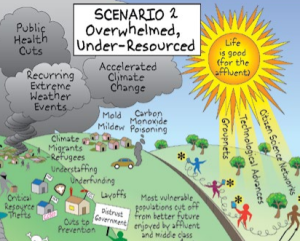 By Wayne Caswell
By Wayne Caswell
As a retired IBM technologist, health consumer advocate, and amateur futurist, I’ve often written about The Future of Healthcare and highly recommend this report by the Institute for Alternative Futures.
Public Health 2030: A Scenario Exploration is supported by funding from the Robert Wood Johnson Foundation and the Kresge Foundation and presents alternative futures to help shape decision-making and public investments in a preferred version of the future while avoiding things that would lead to a less desirable version.
Public health, which started out with mass vaccinations to control and prevent infectious diseases, has proven to be one of the most cost-effective investments in the health of our nation, and it has since grown to include:
- Food safety,
- Tobacco control,
- Fluoridation of drinking water,
- Family planning,
- Child & maternal health,
- Emergency preparedness,
- Environmental health,
- Workplace safety,
- Motor-vehicle safety,
- Screening for specific diseases,
- Chronic disease control & prevention,
- Policy making, and
- Strategic leadership for communities.
Going forward, however, federal, state and local public health agencies face major funding pressures, and these functions face an uncertain future that will need significant changes in how the public health community responds.
Alternative Futures
The report’s four alternative scenarios characterize the degree of uncertainty based on today’s knowledge and gives public health leaders an opportunity to influence which future unfolds and how. Here’s a quick look at the scenarios.
Scenario 1: One Step Forward, Half a Step Back
Given the fiscal constraints in a struggling economy, health care and public health agencies slowly advance their capabilities with automation and advanced analytics but there seems to be little progress due to climate change, variations in tech adoption and funding, and the continuous rise in health care costs for an aging population.
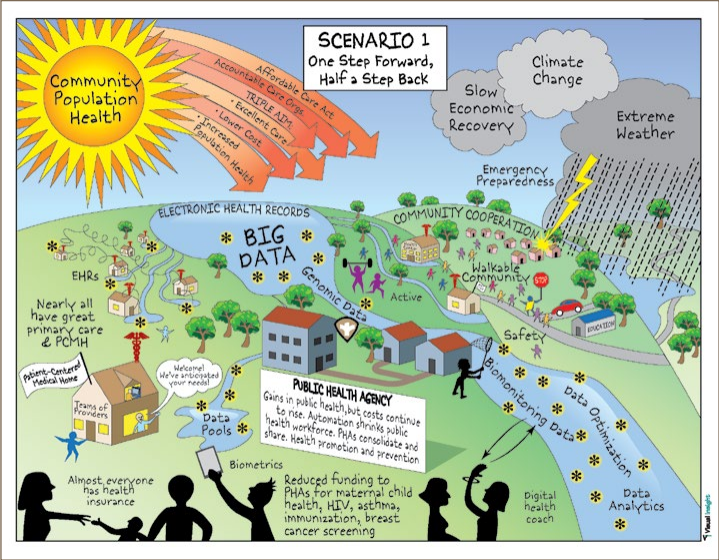
Scenario 2: Overwhelmed, Under-Resourced
Funding cuts and a hostile political climate undermine the role of public health and discourage talented young people from entering the field. The public health crisis grows worse, largely due to climate change, environmental pollution, and less-healthy water & food supplies. Private sector innovations produce significant improvement in health and wellness but primarily benefit affluent populations as economic and health disparities grow.
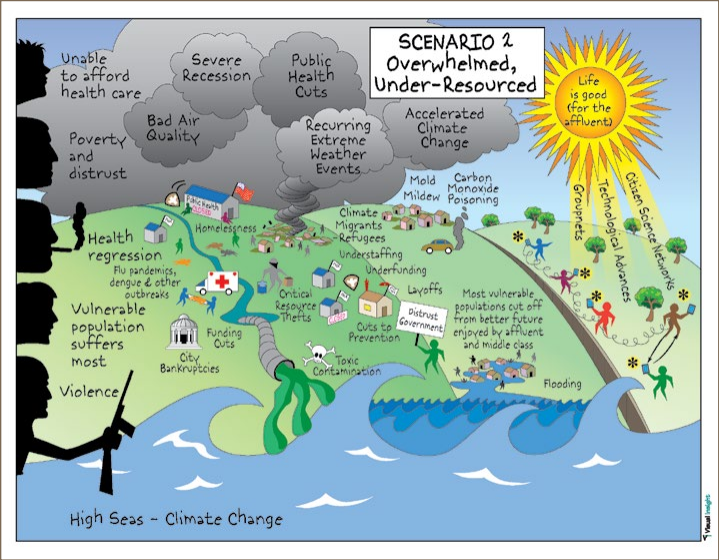
Scenario 3: Sea Change for Health Equity
National and local economies gradually recover and grow, and changes in demographics and public values lead to a more cooperative and reasoned political climate that supports health equity and public health. While some disparities remain, most citizens have attained greater opportunities for good health.
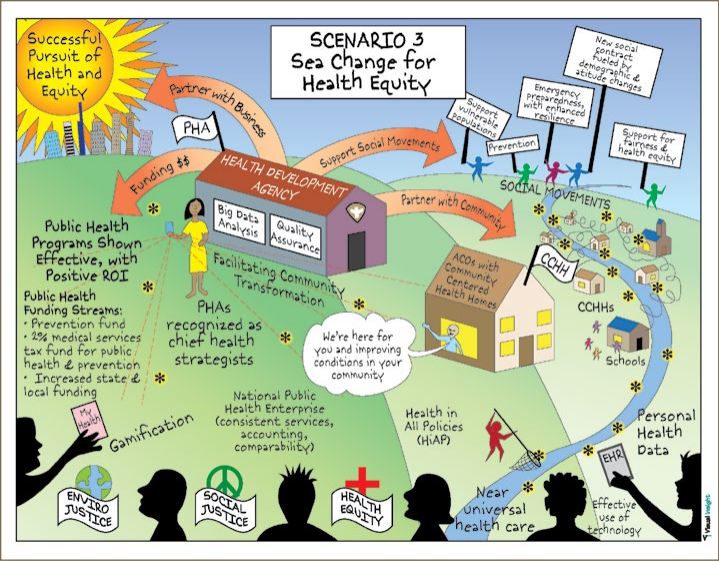
Scenario 4: Community-Driven Health and Equity
The public health community is finally in sync with technology and social media in a web of health enhancing networks that promote the sharing of best practices. The nation experiences a value shift and has begun to come to terms with its racial and socioeconomic history and supports legislation serving a more equitable society. With improved health, public health organizations shed many of their past functions as no longer necessary, helping to cut the size of government.
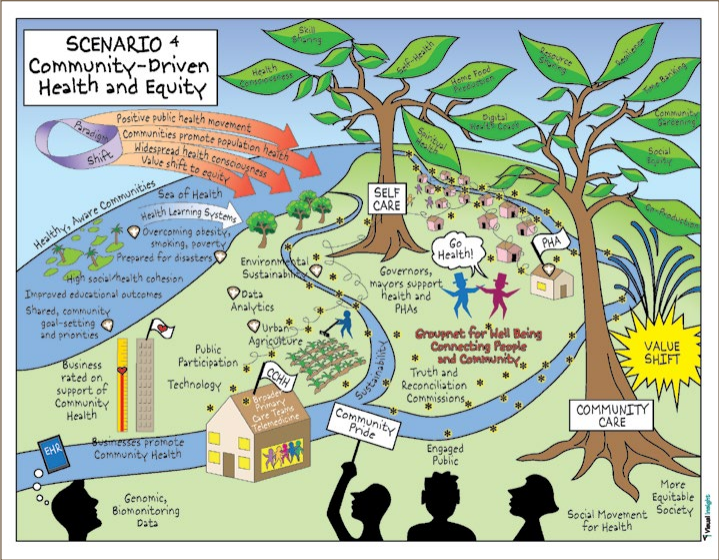
Which of these future scenarios do YOU see as more likely, and more preferable? You can see what the panel of experts thought on page 39 of the report.
